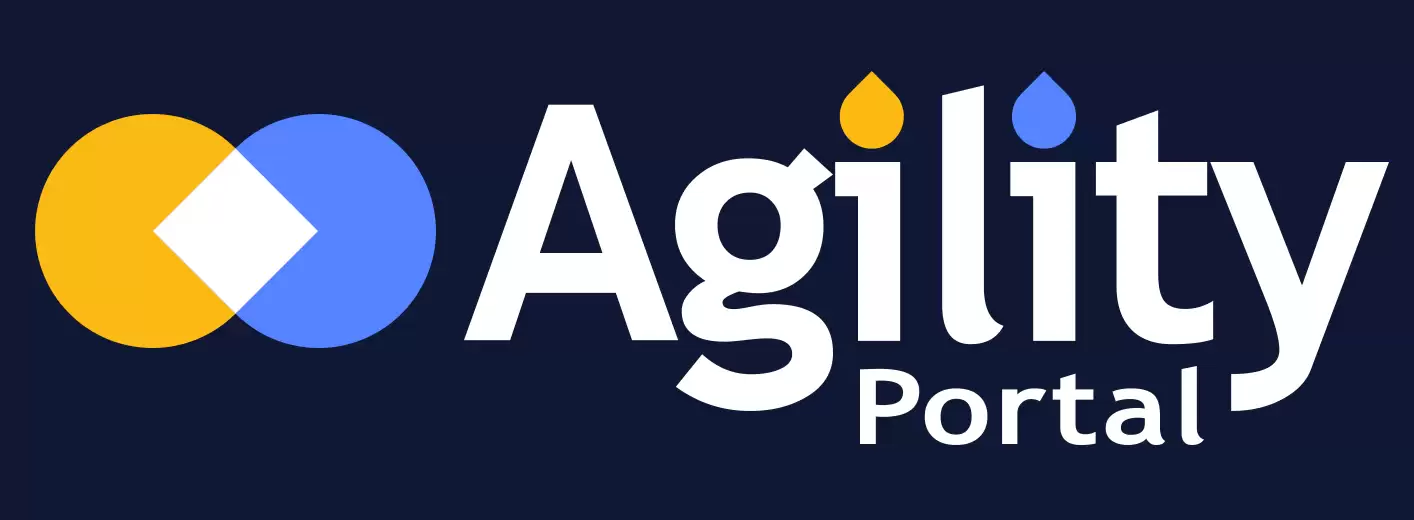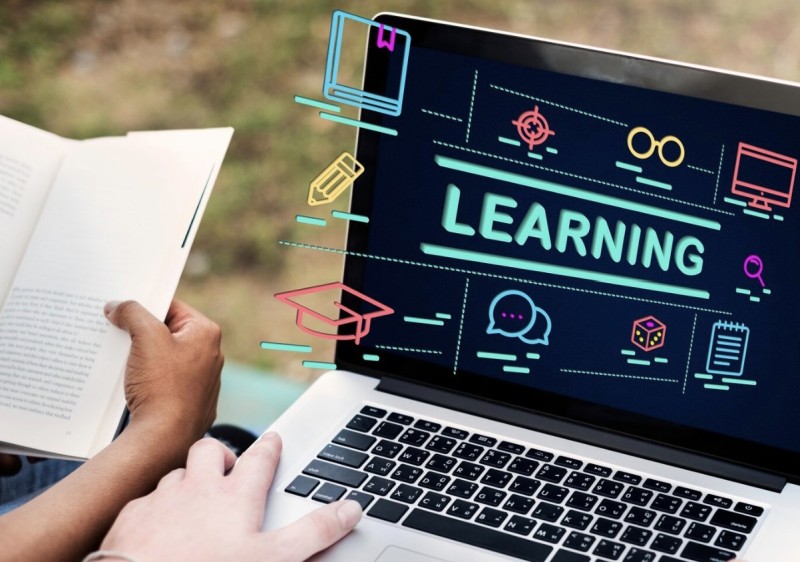Insight Blog
Agility’s perspectives on transforming the employee's experience throughout remote transformation using connected enterprise tools.
14 minutes reading time
(2747 words)
How to Learn AI From Scratch: The Ultimate Beginner’s Guide
How to Learn AI From Scratch: The complete beginner's guide covering Python, ML projects, and must-know AI fundamentals.
AI is rapidly reshaping the world around us. From enhancing productivity to revolutionizing how we work and interact, artificial intelligence tools are now at the heart of everyday operations across multiple industries.
The pace of innovation is accelerating, prompting a growing number of professionals and enthusiasts to explore how to learn AI from scratch.
According to the 2025 Global AI Readiness Report, over 72% of business leaders now recognize AI literacy as essential for their teams to perform effectively in their roles.
From marketing professionals using AI for content generation to software engineers automating code testing with tools like ChatGPT, Gemini, and Midjourney, AI is becoming an indispensable part of the modern workflow.
This increasing demand highlights just how crucial it is to build AI skills—whether your goal is to become a data scientist, a machine learning engineer, or simply stay ahead in a tech-driven world.
This guide will walk you through everything you need to know to start learning AI, including key concepts, foundational skills, and recommended tools.
It will also explore how organizations can harness AI technologies to drive productivity, innovation, and smarter decision-making—making AI knowledge one of the most valuable assets in today's workforce.
Read this article:
How to use AI for Management and Communication
How to use AI for Management and Communication
What is Artificial Intelligence?
Artificial Intelligence (AI) is the simulation of human intelligence in machines programmed to think, learn, and solve problems that mimic human behaviour—but often with greater speed and accuracy.
At its core, AI enables machines to perform cognitive functions such as learning, reasoning, pattern recognition, and decision-making. These capabilities allow AI systems to analyze vast amounts of data, adapt to new inputs, and execute tasks that traditionally require human intelligence.
Today, AI is deeply embedded in our personal and professional lives, often without us even realizing it.
Whether it's the suggested route on your GPS, the movie recommendations you receive on Netflix or the product suggestions on Amazon, AI is working behind the scenes to enhance convenience and personalization.
Here are some key real-world examples of AI in action:
- Navigation Tools - Google Maps uses AI to analyze traffic patterns, road closures, and user data to provide the most efficient routes.
- Intelligent Assistants - Devices like Siri, Alexa, and Google Assistant rely on AI-powered natural language processing to understand and respond to user queries.
- Social Media Algorithms - Platforms like Facebook and Instagram use AI to personalize your feed, display targeted ads, and even detect harmful content.
- Voice-to-Text Technology - AI helps convert speech to written text, which is used in services like live captions, virtual meetings, and transcription tools.
- Recommendation Systems - Streaming and shopping platforms utilize AI to suggest content or products based on your preferences and behaviour.
As we increasingly rely on AI, understanding its fundamentals becomes essential not just for tech professionals but for anyone who wants to thrive in a digitally driven world.
The Role of Unsupervised and Reinforcement Learning
Artificial Intelligence (AI) continues to evolve by drawing inspiration from how humans learn and adapt.
Two of the most transformative machine learning methods—unsupervised learning and reinforcement learning—are paving the way for more human-like capabilities in machines.
Unsupervised learning mimics how people absorb information by simply observing. This approach uses algorithms trained on data without predefined labels, allowing systems to independently detect hidden patterns, groupings, or structures. It's similar to how a child might learn about the world—through exploration and discovery rather than being explicitly taught.
In contrast, reinforcement learning is based on learning from feedback. Inspired by behavioural psychology, this method trains AI agents to make decisions through trial and error. The system receives rewards or penalties based on its actions, encouraging it to learn strategies that maximize long-term success. Like humans refine their behaviour through experience, reinforcement learning enables machines to adapt and improve over time.
Together, these learning techniques are moving us closer to creating AI systems that don't just follow instructions but learn, adapt, and evolve—much like the human mind.
Understanding these core concepts is crucial as you begin your journey into AI. This guide aims to break down complex ideas into practical knowledge for beginners.
Whether you're interested in how AI can power real-world innovations or looking to build your intelligent systems, exploring these cutting-edge learning methods will be key.
How long does it take to learn AI?
One of the most common questions among aspiring learners is, "How long does it take to learn AI?"
The answer depends on several personal factors such as your background in programming and mathematics, the depth of knowledge you're seeking, and how much time you can consistently commit to learning.
If you already have a foundation in Python and statistics, you could grasp the basics of AI and machine learning within 6 to 12 months of steady study.
Mastering more advanced topics like deep learning, neural networks, or reinforcement learning can add another 6 to 12 months. For beginners, the journey might take longer, but with the right structure and support, it's entirely achievable.
Programs like those at IU International University of Applied Sciences are designed to guide learners at different levels through a customized path. Whether you're studying full-time or alongside work, the curriculum adapts to help you grow at your own pace—building the strong foundation needed to succeed in real-world AI applications.
An exciting example of how AI is changing education itself is the rise of the AI grader. This technology offers consistent, unbiased assessments by leveraging machine learning algorithms to evaluate student work.
Unlike traditional grading, which can suffer from human error or subjectivity, AI grading systems provide instant feedback, increase efficiency, and promote fairness in academic evaluations.
Several key factors influence your AI learning path:
- Your current educational foundation - Having a grasp of mathematics (especially linear algebra, probability, and statistics) and programming (particularly Python) can accelerate your progress.
- Your desired level of expertise - Whether you're aiming for a beginner's understanding, career-ready skills, or deep specialization, the learning curve will vary.
- The time you can consistently invest - Regular study sessions, hands-on practice, and building projects greatly influence how fast you grasp core concepts.
- The AI domains you want to explore - Basic machine learning may take 6–12 months to grasp, while advanced areas like deep learning, NLP, or reinforcement learning can extend your journey by another 6–12 months.
Ultimately, the question isn't just "how fast can I learn AI?" but "how thoroughly can I understand and apply it?" AI is not a skill to rush—it's a field to grow into.
And with tools like personalized learning platforms and AI graders improving the learning experience, now is a better time than ever to begin your journey into artificial intelligence.
An Example AI Learning Plan
Creating a structured AI learning plan is crucial for building a strong foundation and achieving long-term success in the field.
Whether you're starting from scratch or have some technical background, a well-organized roadmap will guide your progress.
Here's an example of a 6-month AI learning plan for beginners:
- Month 1: Understand the Basics Start by learning what artificial intelligence is and how it's applied in real-world scenarios. Focus on foundational concepts such as supervised and unsupervised learning, classification, and regression. Learn basic Python programming if you're not familiar already, using resources like Codecademy or Python.org.
- Month 2: Learn Mathematics for AI Mathematics is essential. Focus on linear algebra, probability, statistics, and calculus — all of which play a crucial role in understanding AI algorithms. Khan Academy and MIT OpenCourseWare are great for beginners.
- Month 3: Dive into Machine Learning Explore machine learning fundamentals using platforms like Coursera (Andrew Ng's ML course is highly recommended). Learn about key models such as decision trees, SVMs, k-NN, and basic neural networks.
- Month 4: Practice with Projects Apply your knowledge through hands-on projects. Use open datasets from Kaggle or UCI to build and train models. This could include spam detection, sentiment analysis, or recommendation systems.
- Month 5: Explore Deep Learning Study neural networks, CNNs, RNNs, and frameworks like TensorFlow or PyTorch. Work through tutorials and try building simple image classifiers or text generators.
- Month 6: Specialize and Showcase Choose a specialization like natural language processing, computer vision, or reinforcement learning. Start contributing to GitHub and build a portfolio. This is also a good time to study ethical AI principles and understand AI's social impact.
Stick to your schedule, remain consistent, and adapt the plan as needed.
Prerequisites to Learning AI
Before diving into AI, it's essential to build a strong foundation in mathematics, particularly Linear Algebra, Calculus, and Probability & Statistics, as these form the backbone of AI algorithms.
Also, programming skills—especially in Python—are crucial, given its simplicity and extensive AI/ML libraries.
Beyond technical skills, logical and analytical thinking is vital for problem-solving and model optimization.
Core Subjects to Study
To master AI, focus on these key subjects:
- Linear Algebra & Matrices (for transformations and operations in neural networks)
- Differential & Integral Calculus (essential for optimization and gradient descent)
- Probability, Distributions & Statistics (critical for understanding data patterns)
- Data Structures & Algorithms (helps in optimizing AI model efficiency)
AI vs. ML vs. DL: Understanding the Differences
- AI (Artificial Intelligence): The broadest field, focused on creating systems that mimic human intelligence.
- Machine Learning (ML): A subset of AI where systems learn from data using statistical methods.
- Deep Learning (DL): A specialized branch of ML that uses neural networks with multiple layers to model complex patterns (e.g., image and speech recognition).
Key Learning Areas in AI
- Supervised Learning (Training models with labeled data, e.g., regression, classification)
- Unsupervised Learning (Finding patterns in unlabeled data, e.g., clustering)
- Reinforcement Learning (AI learns by trial and error, e.g., game-playing agents)
- Natural Language Processing (NLP) (AI for text and speech, e.g., ChatGPT)
- Computer Vision (AI for image/video analysis, e.g., facial recognition)
Recommended Tools & Libraries
- TensorFlow & PyTorch (Leading frameworks for deep learning)
- Scikit-learn (Best for traditional ML algorithms)
- Keras (Simplifies neural network development)
- OpenAI APIs (For integrating cutting-edge AI models like GPT-4 into applications)
5 Essential Strategies for Success
Entering the world of artificial intelligence can feel overwhelming, but with the right roadmap, you can navigate this exciting field with confidence.
Here are five proven strategies to accelerate your AI mastery:
1. Define Your AI Path
Your learning strategy should align with your professional aspirations. AI offers diverse career paths, each demanding specialized knowledge:
- Applied AI Roles (Data Scientist, ML Engineer): Prioritize hands-on programming, data wrangling, and deploying ML models to solve business challenges
- Research-Oriented Roles (AI Researcher, ML Scientist): Deep dive into advanced mathematics, algorithmic theory, and cutting-edge AI concepts
This isn't about limiting yourself, but creating a focused starting point for your educational journey.
2. Build Knowledge Systematically
With your direction set, curate your learning resources strategically:
- Begin with foundational courses (like Python for AI or Linear Algebra refreshers)
- Progress to specialized topics (NLP, Computer Vision, etc.)
- Remember: AI mastery comes from depth of understanding, not speed of completion
3. Learn Through Doing
Transform theory into expertise with practical implementation:
- Start with beginner projects (sentiment analysis, predictive models)
- Advance to complex applications (neural networks, generative AI)
- Document your work in a portfolio to demonstrate growing capabilities
4. Connect With the AI Community
Accelerate your growth through collective knowledge:
- Engage in AI forums (Kaggle, GitHub, specialized subreddits)
- Attend hackathons and local meetups
- Join professional networks (like DataCamp's certified community)
These connections provide mentorship, collaboration opportunities, and industry insights.
5. Commit to Continuous Growth
In this rapidly evolving field, your education never stops:
- Stay current with AI research papers and industry trends
- Regularly upgrade skills through advanced courses
- Challenge yourself with increasingly complex projects
Pro Tip: The AI learning curve is steep but surmountable. When facing obstacles, remember: every expert was once a beginner.
Maintain curiosity, embrace challenges, and let each breakthrough motivate your next leap forward.
The Human Factor in AI Adoption
While AI systems offer tremendous value, they require thoughtful human supervision. These tools serve as powerful assistants rather than autonomous decision-makers.
To maximize their effectiveness:
- Always Verify Outputs - AI-generated content and analyses should undergo human review to catch inaccuracies, biases, or inappropriate suggestions.
- Understand Ethical Implications - Responsible AI use demands awareness of potential biases in training data and algorithmic limitations that could impact fairness.
- Stay Legally Compliant - With regulations like the EU AI Act now in force, organizations must develop AI literacy to navigate compliance requirements.
Strategic AI Integration for Business Success
True mastery of business AI goes beyond technical know-how—it's about:
- Purposeful Implementation (aligning tools with specific business goals)
- Continuous Refinement (regularly evaluating and optimizing AI usage)
- Competitive Adaptation (staying current with AI advancements)
By combining human judgment with AI capabilities, professionals can drive meaningful innovation while maintaining ethical and legal standards.
The future belongs to those who can harness AI as a collaborative tool rather than treating it as a complete solution.
Best Tools for Learning AI in 2025 (Free & Paid)
Here's a curated list of the best tools for learning AI in 2025, covering both free and paid options.
These platforms and resources cater to different learning styles—whether you're a visual learner, a hands-on coder, or a theory lover.
1. Google AI & Machine Learning Crash Course
Offers real-world exercises and over 25 lessons with interactive visualizations. Perfect for beginners.
🔗 ai.google/education
2. Fast.ai
A top choice for practical deep learning. Teaches you how to train models without needing a PhD.
🔗 fast.ai
3. MIT OpenCourseWare – Artificial Intelligence
Access full university-level AI courses, including lecture videos, readings, and assignments.
🔗 ocw.mit.edu
4. Kaggle
Provides hands-on machine learning practice with real datasets and community-driven learning.
🔗 kaggle.com
5. OpenAI Cookbook
Hands-on code examples and tutorials using ChatGPT, Codex, and other OpenAI tools.
🔗 github.com/openai/openai-cookbook
Wrapping up
Mastering artificial intelligence isn't just about acquiring technical skills—it's about unlocking a future of innovation and opportunity.
This transformative journey takes you beyond traditional learning into a continuous cycle of:
- Discovery (absorbing new concepts)
- Application (implementing knowledge)
- Experimentation (testing boundaries)
- Refinement (perfecting your craft)
The most effective learning happens by doing.
Through hands-on courses and real-world projects, you'll develop more than AI expertise—you'll build invaluable problem-solving abilities, sharpen your analytical thinking, and unleash creative approaches to technological challenges.
Remember: Every AI expert started exactly where you are now. Your breakthrough moment begins with a single lesson.
Free Self-Study Guide: How to Learn AI From Scratch (2024 Roadmap)
Want to learn AI but don't know where to start? This complete roadmap to learn AI covers everything from basics to advanced concepts – 100% free.
Can I Learn AI Without Coding?
While some tools (like Google AI Course) offer no-code introductions, mastering AI long-term requires Python. Don't worry – we include beginner-friendly coding resources!
Step-by-Step AI Learning Path
AI for Beginners
- Start with free intro courses (Google's "Machine Learning Crash Course")
- Learn core concepts: ML vs. DL, neural networks, data preprocessing
Essential AI Tools to Learn
- Python + key libraries (NumPy, Pandas)
- Frameworks: TensorFlow, PyTorch
- Cloud platforms: Google Colab (free GPU access)
Project-Based Learning
- Implement what you learn through hands-on projects (find ideas on Learn AI from Scratch GitHub repos)
- Join communities (Learn AI from Scratch Reddit threads for feedback)
Best Free Resources
- Google AI Course (ML fundamentals)
- Fast.ai (practical deep learning)
- Kaggle (free datasets + tutorials)
Tips for Success
- Dedicate 5-10 hours/week
- Focus on learning AI online through projects, not just theory
- Use AI learn communities for support
Ready to begin? Many successful AI engineers started with free resources – your journey starts today!
Bonus: Check the comments for updated learn AI tools and how to self-study artificial intelligence free resource lists!
Read this article: : Top 6 AI-Powered Project Management Tools To Use In 2023
We think you might like to read next

Boost Warehouse Staff Productivity and How Tech Enables Faster, Smarter eCommerce Operations
Okay, so tech is making everything work better these days - and warehouses are getting in on that action. With all this new robot stuff, AI, and intelligent data tracking, companies are figuring out how to do more without working their employees to death. According to McKinsey, warehouses implementing these technologies see 30% higher productivity ...
https://agilityportal.io/blog/warehouse-staff-productivity-ecommerce-fulfillment-technology
Categories
Blog
(2618)
Business Management
(323)
Employee Engagement
(212)
Digital Transformation
(175)
Growth
(119)
Intranets
(115)
Remote Work
(61)
Sales
(48)
Collaboration
(36)
Project management
(29)
Culture
(28)
Customer Experience
(26)
Knowledge Management
(21)
Leadership
(20)
Comparisons
(6)
News
(1)
Ready to learn more? 👍
One platform to optimize, manage and track all of your teams. Your new digital workplace is a click away. 🚀
Free for 14 days, no credit card required.










![What Is an Intranet for Business? [2026 Guide] What Is an Intranet for Business? [2026 Guide]](http://agilityportal.io/images/easyblog_articles/1496/b2ap3_thumbnail_What-Is-an-Intranet-for-Business.png)




